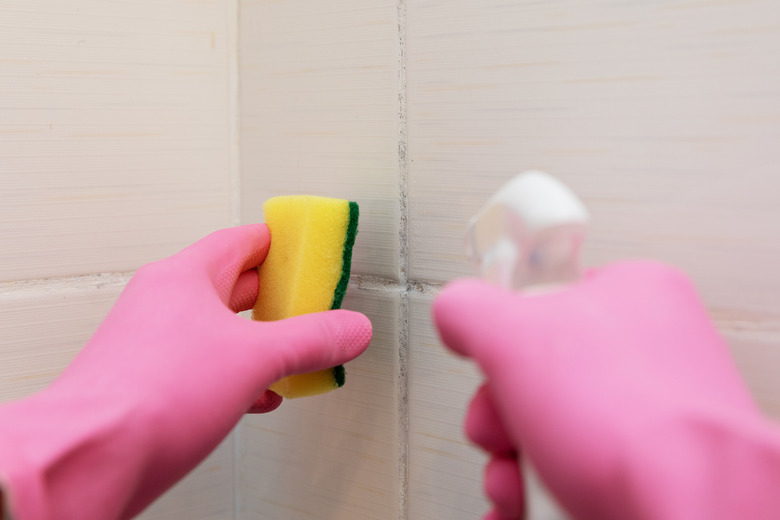Does Lysol Kill Mold Spores?
We may receive a commission on purchases made from links.
Lysol makes a number of disinfectant products routinely used in homes and offices. You can use Lysol disinfectant for mold and mildew when cleaning and as a preventive measure. However, to kill germs and get rid of mold, the underlying causes must be addressed, or you're just putting a bandage on your mold problem.
Tip
When Lysol is used according to the directions, it is effective in killing mold spores.
Prepare for Cleaning
Prepare for Cleaning
Before you begin cleaning up the mold and mildew, put on gloves, safety goggles, and a N95 mask or respirator to protect your skin, eyes, and lungs. Exposure to mold spores may result in a stuffy nose, coughing, wheezing, an asthma attack, other allergic reactions, and in immune-compromised individuals, a lung infection. The cleaning products can also cause skin irritation and respiratory issues.
In addition, open windows and turn on the exhaust fans in the bathroom and kitchen to increase ventilation in the room and avoid breathing the vapors from the cleaning products. Keep all Lysol products out of the reach of children and pets.
Use a Disinfectant for Mold and Mildew
Use a Disinfectant for Mold and Mildew
Lysol Mold & Mildew Remover With Bleach is recommended for use on hard surfaces to kill germs, mold, and mildew. It is also used to remove soap scum buildup and whiten stained surfaces. To kill mold and mildew:
- Clean the area with a compatible cleaning product, such as a nonammonia dishwashing liquid. Do not use ammonia-, hydrogen peroxide-, or vinegar-based cleaning products.
- Rinse well with fresh water.
- Apply Lysol Mold & Mildew Remover With Bleach to the precleaned surface.
- Allow it to soak for five minutes.
- Let the Lysol air-dry. Do not rinse.
- Repeat weekly as needed.
You can also use Lysol spray for mold and mildew. Unlike the Mold & Mildew Remover, which contains bleach, Lysol Disinfectant Spray can be used on both hard and soft surfaces. However, if the items are severely contaminated, it's usually best to contain them in plastic and discard them. To use Lysol for mold in carpet and to disinfect other surfaces:
- Spray the surface for three to four seconds while holding the can 6 to 8 inches away.
- Keep the surfaces wet: hard surfaces for at least three minutes and soft surfaces for 10 to 15 minutes.
- Scrub, wipe, and repeat as needed for severe mold infestations.
- Leave the Lysol on the treated item or area for 10 more minutes.
- Wipe the treated item or area to remove excess Lysol.
- Allow it to air-dry.
While the disinfectant spray is used on most soft and hard surfaces, it is not recommended for use on brass, copper, or aluminum. In addition, after use on food-contact surfaces and plastic toys, rinse thoroughly with water. Put all disposable items in a plastic trash bag and dispose of the bag and your mask in a garbage can outside. Thoroughly clean brushes and other tools and then wash your clothes in hot water.
Resolve the Underlying Issues
Resolve the Underlying Issues
While using Lysol products eliminates the existing mold and mildew, it will return unless you resolve the underlying issues that promote fungal growth. Mold spores thrive in warm, dark, and moist environments. To discourage mold and mildew:
- Locate leaks and repair them.
- Use exhaust fans in your kitchen and bathroom to remove steam and moist air generated by cooking and bathing.
- Wipe down wet showers, bathroom walls, and floors.
- Connect the dryer hose to an outside vent; keep it clean to ensure an efficient flow of lint and moist air to the outdoors.
- Increase air circulation in your home by opening windows and using oscillating or box fans.
- Use a dehumidifier or dehumidifying products to lower the humidity in your home, including closets, laundry rooms, and basements.
Continue to monitor your home for mold and mildew. Clean problem areas as needed and monitor for leaks, standing water, and humid conditions.
